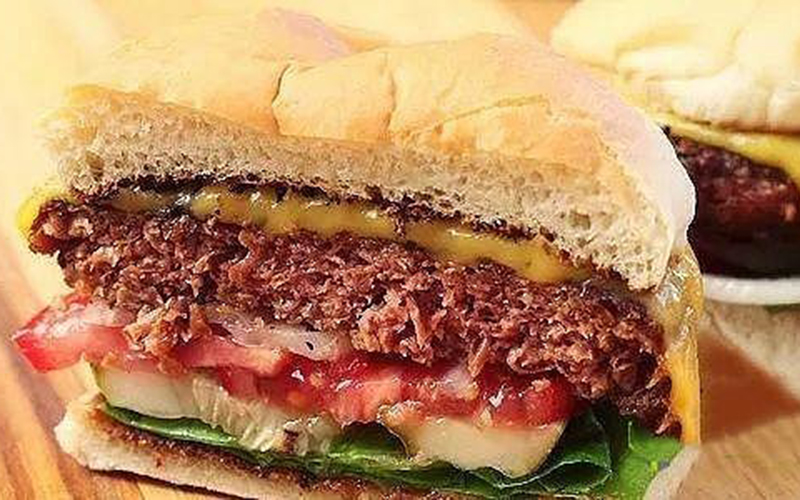The German "Economic Weekly" website published an article entitled "These foods can already be printed by 3D printers" on December 25. The author is Christina Holland. The content of the article is as follows:
A nozzle sprayed out the flesh-colored substance continuously and applied it layer by layer. After 20 minutes, an oval-shaped thing appeared. It looks uncannily similar to a steak. Did Japanese Hideo Oda think of this possibility when he first experimented with "rapid prototyping" (that is, 3D printing) in the 1980s? Oda was one of the first researchers to take a hard look at how to make products by applying materials layer by layer.

In the following years, similar technologies were developed mainly in France and the United States. Since the 1990s at the latest, the technology has advanced by leaps and bounds. After several additive manufacturing processes reached commercial levels, it was industry and then the media that took notice of this new technology: News reports of the first printed kidneys and prosthetics brought 3D printing into the public eye.
Until 2005, 3D printers were only industrial devices out of reach of end customers because they were bulky, expensive and often protected by patents. However, the market has changed a lot since 2012—food 3D printers are no longer just for ambitious amateurs.
Alternative Meat
In principle, all paste or puree foods can be printed. 3D printed vegan meat is currently getting the most attention. Many start-ups have sensed the huge business opportunities on this track. The plant-based raw materials for the 3D printed vegan meat include pea and rice fibers. The layer-by-layer technique has to do something that traditional manufacturers have been unable to do for years: Vegetarian meat has to not only look like meat, but also taste close to beef or pork. Moreover, the printed object is no longer the hamburger meat that is relatively easy to imitate: Not long ago, the Israeli start-up company "Redefining Meat" launched the first 3D printed filet mignon.
Real Meat
Meanwhile, in Japan, people have made even greater progress: In 2021, researchers at Osaka University used stem cells from high-quality beef breeds Wagyu to grow different biological tissues (fat, muscle and blood vessels), and then used 3D printers to print They are grouped together. The researchers hope to mimic other complex meats in this way as well. Japanese precision instrument maker Shimadzu plans to partner with Osaka University to create a 3D printer capable of mass-producing this cultured meat by 2025.
Chocolate
Home 3D printers are still rare in the food world, but chocolate 3D printers are one of the few exceptions. Chocolate 3D printers cost upwards of 500 Euros. The solid chocolate block becomes liquid in the nozzle, and then it can be printed into a predetermined shape or text. Cake parlors have also started using chocolate 3D printers in order to make complex shapes or text that would be difficult or impossible to make traditionally.
Vegetarian Salmon
At a time when wild Atlantic salmon are being overfished, flesh samples from large salmon farms are almost universally contaminated with parasites, drug residues (such as antibiotics), and heavy metals. Currently, some start-ups are offering alternatives to consumers who love salmon but would rather not eat the fish for environmental or health reasons. Young entrepreneurs at Lovol Foods in Austria are producing smoked salmon using pea protein (to mimic the structure of meat), carrot extract (for color) and seaweed (for flavour).
Pizza
Even pizza can be 3D printed. However, printing pizza requires several nozzles: one each for the dough, one for the tomato sauce and one for the cheese. The printer can print pizzas of different shapes through a multi-stage process. Applying these ingredients only takes a minute. The downside is that people's favorite toppings can't be printed, and if you want more topping than your base margherita pizza has, you have to add it manually.
3D-printed pizzas made headlines in 2013 when NASA funded a project aimed at providing fresh food to future astronauts traveling to Mars.
3D printers from Spanish start-up Natural Health can also print pizza. However, this machine is expensive: the current official website sells for $6,000.
Noodle
Back in 2016, pasta maker Barilla showed off a 3D printer that used durum wheat flour and water to print pasta in shapes impossible to achieve with traditional manufacturing processes. In mid-2022, Barilla has launched its first 15 printable designs for pasta. Prices range from 25 to 57 euros per serving of personalized pasta, targeting high-end restaurants.
Post time: Jan-06-2023

